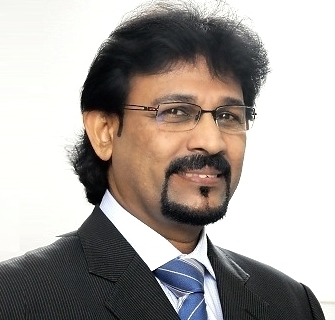
By Ravindran Raman Kutty
A friend of mine believed our national unity is in shambles and blamed the existence of vernacular schools as the cause of this disunity.
Surprised by his views, I conducted a quick dipstick survey with a few of my friends who were headmasters, teachers, ministers and several community leaders and workers. The results of this survey, hence, convinced me otherwise.
A senior officer from the Ministry of Education confirmed that in 2020, over 15.3% of the total population at Chinese primary schools were Malays, an increase from 9.5% in 2012. The Indian students attending Chinese schools also increased to 2.75% of the total student population in 2020 as compared to 1.67% ten years ago.
The increasing intake of Malay and Indian students in Chinese schools fascinated me.
Using the increase in the number of Chinese and Indian students in Chinese and Tamil schools respectively, one important fact that remains to be carefully studied is the Malaysian history, in the right perspective.
When the Indians migrated to and settled in Malaysia, they were in the rural areas. There were hardly any schools in rural areas those days. Many of the Indians were poor and mostly employed by the British, so they improvised and built little school huts to conduct classes in, with the highest educated among them taking on the role of teachers.
The Chinese folk in the urban settings were better off as most of them were employed by Chinese entrepreneurs. These entrepreneurs built small schools with teachers brought in from China.
Both the Indian and Chinese communities realized the need for education to be taught in their mother tongues, i.e. vernacular.
The government, too, built Tamil and Chinese schools in urban and rural areas.
When Mandarin was made mandatory in China, and when Singapore enforced it, the Malaysian Chinese leaders also accepted Mandarin as the medium of instruction.
There are 1,200 Chinese and 523 Tamil schools in Malaysian that use Mandarin and Tamil respectively as the medium of instruction.
While this is the quick landscape of the vernacular school history, the then government's policy of English education was not well received by both the communities, as they were comfortable in learning in the languages that they could understand.
Both the Malaysian Chinese Association (MCA) and Malaysian Indian Congress (MIC) were successful in ensuring the Razak Report recognized the importance of vernacular schools by giving them the choice of opting for large funding for the schools and equal pay as government schoolteachers according to their academic and professional qualifications.
This was done on a clear purpose to bring about unity and equality, especially for the teaching staff and even the overall maintenance of the school structures.
According to a retired secondary school headmaster, "If there was disunity, I doubt Barisan Nasional (BN) could have ruled the country for 60 years without any issues in regard to power or even power sharing."
There are no studies so far to claim that vernacular schools are a cause for disunity among the races.
According to the curriculum development center, the syllabus for both national (Sekolah Kebangsaan) and national type (Sekolah Jenis Kebangsaan) are the same except for the medium of instruction applied, where one is in Bahasa Melayu and others in Mandarin and Tamil, respectively.
The world is looking into diversity and at how to make their education diverse. In Malaysia, we are very lucky to have an education system that is diverse and colorful. This is a strength rather than a weakness. This will certainly bring about greater understanding of the races and assimilation, too.
A study by Professor Jim Cummins, University of Toronto, says that children who develop skills in two or more languages grow up with a deeper understanding of forming sentences and expressing themselves easily, are more advanced in critical thinking, and are better at picking up an additional language with a strong foundation of their mother tongue, thus developing their literacy skills.
In comparison, children who spoke only one language had a fixed mind set on communicating about what they wanted and needed and lacked the knowledge and skill of using the language in the same depth as children using two or more languages.
A former senior assistant of a secondary school said that vernacular schools generally instill and enhance human, religious, and cultural values, and are equally patriotic.
They link the cultural heritage of their communities, hence are deemed instrumental in embodying a multi-cultural Malaysia.
This was further supported by a Malay teacher from a national primary school who added that it is the national school students who have created much damage to the Malaysian political fabric and the current political tsunami, with the formation of several Malay political parties, as witnessed since the 2015 elections.
The elephant in the room must be addressed than doing window dressing for this issue.
Proper studies must be carried out to weigh its pros and cons. If we take a political standpoint, we may lose out our fundamental premise of being the cradle of a multi-lingual, multi-religious, multi-ethnic, multi-cultural nation that we are known for.
While the whole world is into learning about other races and other languages, in Malaysia we are fortunate to already have such a scenario with the communities of the two economic giants of Asia living side by side.
During the launch of the Multimedia Asia on Multimedia Super Corridor (MSC) at PWTC in 01/09/1996, Tun Dr Mahathir in his speech said, "Malaysia's physical location at the center of ASEAN and its multicultural links with the biggest Asian markets is unique. We have language skills and cultural knowledge that can be very helpful. Most people speak English as well as one of or more languages such as different Chinese or Indian dialects or Malay. How come we have forgotten the unequable economic value that Chinese and Indian languages bring to our nation?"
Perhaps this economic condition may be one reason for the sudden rise of Malays enrolling in the Chinese schools.
If we continuously pretend to place importance to vernacular schools only during election season, we are just evading the issue.
To give greater importance and recognition of having additional languages in our country, let us convert the partial funding of Tamil and Chinese school into fully aided schools. This will certainly ease the financial security fear of both the Tamil and Chinese schools, thus disallowing any politicians to use this a weapon during any election.
Recently Dr Mahathir Mohamad, who had served as education minister during the premiership of Tun Razak and Tun Hussein Onn, said that there is an overemphasis of Islam in schools at the expense of the kind of education needed in an increasingly demanding world. It is almost as if every student is going to be an ulama, he said.
This is a serious concern raised by the former prime minister, which must be viewed critically.
Education is critical for a young nation like ours, be it through our national or vernacular schools. We must move forward, harnessing the impeccable values that education brings into our culture and moral fiber.
No child is taught by any teacher to hate. Education begins at home. If parents always criticize other races and religions in front of their children, the children will pick up the habit and follow suit.
None of our educational systems teach hatred. Our education system is harmonious. Every child is first molded at home, not in school.
We have had many Muslim, Hindu, and Buddhist children who have attended Christian Missionary schools, done well for themselves, and have remained with their respective religions and beliefs.
We need a concrete initiative like teaching three months of "National Unity" in Form One for every secondary school child. We teach them basic tenets of every religion and practice, every festival and culture, every type of food, success stories, roles in national history, economy and sports. This will bring about greater understanding, love for one another and integration.
It is pointless to say that we have failed without trying new ways to bring our national unity to greater heights. Education is the foundation of National Unity. Our well-organized education system, policy, teacher training colleges, teachers, teaching aids and the great infrastructure can be put to greater use to bring about a formidable change.
A child's mind and heart start growing at home and are further nurtured in school. Let us focus on building a holistic nation by starting with our children, right from our homes.
(Ravindran Raman Kutty is an active social worker.)
ADVERTISEMENT
ADVERTISEMENT


































